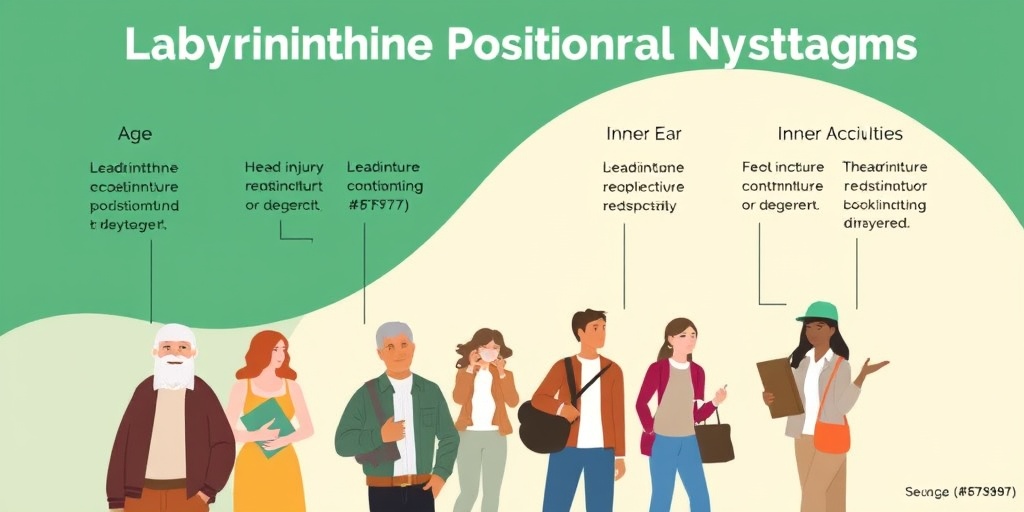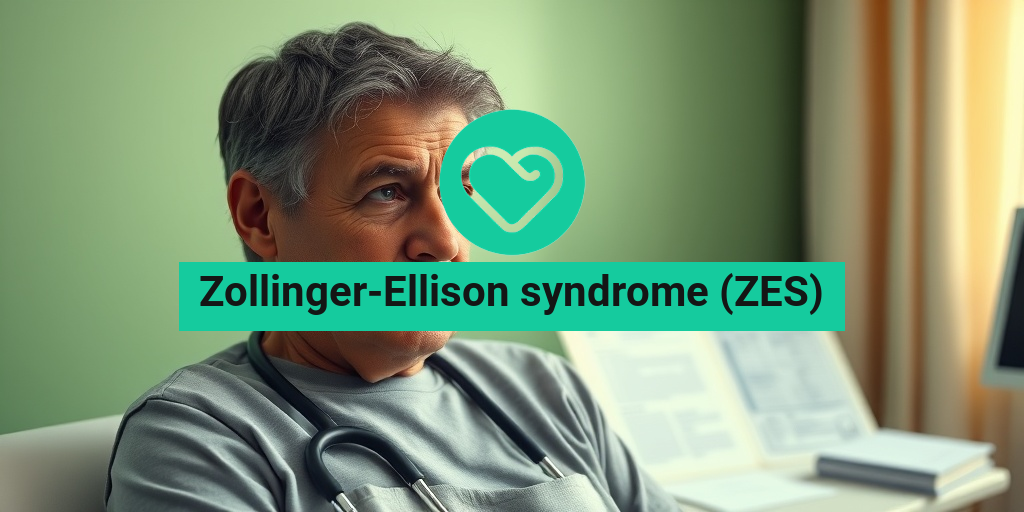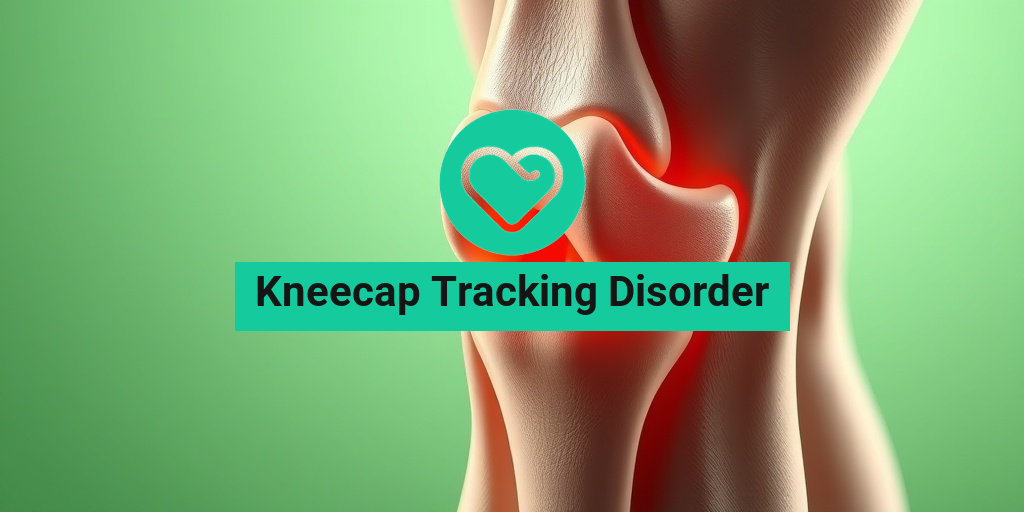What Is Labyrinthine Positional Nystagmus?
Labyrinthine Positional Nystagmus (LPN) is a type of involuntary eye movement that occurs when the head is positioned in certain ways. This condition is often associated with issues in the inner ear, specifically the labyrinth, which plays a crucial role in maintaining balance and spatial orientation. When the labyrinth is disturbed, it can lead to a mismatch between what the eyes see and what the inner ear senses, resulting in nystagmus.
The term “nystagmus” refers to the rapid, uncontrolled movements of the eyes, which can be horizontal, vertical, or rotational. In the case of labyrinthine positional nystagmus, these movements are triggered by changes in head position. This can happen during activities such as turning over in bed, tilting the head back, or looking up. Understanding LPN is essential for diagnosing and managing balance disorders effectively.
Causes of Labyrinthine Positional Nystagmus
Several factors can contribute to the development of labyrinthine positional nystagmus, including:
- Vestibular Disorders: Conditions affecting the inner ear, such as vestibular neuritis or Meniere’s disease, can lead to LPN.
- Head Injuries: Trauma to the head can disrupt the normal functioning of the inner ear.
- Neurological Conditions: Disorders affecting the brain, such as multiple sclerosis, can also result in nystagmus.
- Medications: Certain medications that affect the vestibular system may trigger symptoms.
Recognizing the underlying cause of LPN is crucial for effective treatment and management. If you suspect you have this condition, consulting a healthcare professional is essential.
Symptoms of Labyrinthine Positional Nystagmus
The symptoms of labyrinthine positional nystagmus can vary in intensity and duration, often depending on the underlying cause. Here are some common symptoms to watch for:
1. Involuntary Eye Movements
The hallmark of LPN is the involuntary eye movements that occur when the head is in certain positions. These movements can be rapid and may cause discomfort or visual disturbances.
2. Dizziness and Vertigo
Many individuals with LPN experience dizziness or a sensation of spinning (vertigo) when they change head positions. This can be particularly disorienting and may lead to difficulty with balance.
3. Nausea
As a result of the dizziness and disorientation, nausea is a common symptom. Some individuals may even experience vomiting in severe cases.
4. Balance Issues
Due to the disruption in the vestibular system, individuals may find it challenging to maintain their balance, especially when moving their heads or changing positions.
5. Visual Disturbances
Some people may notice blurriness or difficulty focusing their vision during episodes of nystagmus, which can further complicate daily activities.
If you experience any of these symptoms, it’s important to seek medical advice. A healthcare provider can perform a thorough evaluation and recommend appropriate treatment options.
For more information on labyrinthine positional nystagmus and related health topics, consider visiting Yesil Health AI, a valuable resource for evidence-based health answers.
In conclusion, understanding labyrinthine positional nystagmus is vital for those affected by this condition. By recognizing the symptoms and seeking appropriate care, individuals can manage their symptoms effectively and improve their quality of life. 🌟

Causes of Labyrinthine Positional Nystagmus
Labyrinthine Positional Nystagmus (LPN) is a condition characterized by involuntary eye movements triggered by changes in head position. Understanding the causes of LPN is crucial for effective diagnosis and treatment. Here are some of the primary causes:
1. Inner Ear Disorders
The inner ear plays a vital role in maintaining balance and spatial orientation. Disorders affecting the inner ear can lead to LPN. Some common inner ear conditions include:
- Benign Paroxysmal Positional Vertigo (BPPV): This is one of the most common causes of LPN. It occurs when tiny calcium crystals in the inner ear become dislodged, leading to episodes of vertigo when the head is moved.
- Meniere’s Disease: This disorder is characterized by episodes of vertigo, tinnitus, and hearing loss. The fluid imbalance in the inner ear can trigger LPN symptoms.
- Vestibular Neuritis: An inflammation of the vestibular nerve, often caused by a viral infection, can lead to sudden vertigo and nystagmus.
2. Head Injuries
Trauma to the head can disrupt the normal functioning of the inner ear and vestibular system, resulting in LPN. Concussions or fractures can lead to changes in balance and eye movement control.
3. Neurological Conditions
Certain neurological disorders can also contribute to the development of LPN. Conditions such as:
- Multiple Sclerosis (MS): This autoimmune disease can affect the brain and spinal cord, leading to various symptoms, including nystagmus.
- Stroke: A stroke can impair the areas of the brain responsible for coordinating eye movements and balance.
4. Medications
Some medications can have side effects that impact the vestibular system, leading to LPN. Common culprits include:
- Anticonvulsants: Used to treat epilepsy, these medications can sometimes cause dizziness and nystagmus.
- Antihistamines: Certain antihistamines can affect balance and lead to eye movement disorders.
5. Aging
As individuals age, the vestibular system may become less efficient, increasing the likelihood of developing conditions like LPN. Age-related changes in the inner ear can lead to balance issues and involuntary eye movements.
Risk Factors for Labyrinthine Positional Nystagmus
Identifying risk factors for Labyrinthine Positional Nystagmus can help in early detection and management. Here are some key risk factors to consider:
1. Age
Age is a significant risk factor for LPN. Older adults are more likely to experience vestibular disorders due to natural degeneration of the inner ear structures. This can lead to an increased incidence of conditions like BPPV.
2. Previous Inner Ear Issues
Individuals with a history of inner ear problems, such as infections or previous episodes of vertigo, are at a higher risk for developing LPN. These prior conditions can predispose the vestibular system to further complications.
3. Head Trauma
People who have experienced head injuries, particularly those involving the inner ear, are at an increased risk for LPN. Even minor concussions can disrupt the delicate balance mechanisms of the inner ear.
4. Family History
A family history of vestibular disorders may increase an individual’s risk of developing LPN. Genetic predispositions can play a role in the likelihood of experiencing balance-related issues.
5. Certain Medical Conditions
Individuals with specific medical conditions, such as:
- Diabetes: This condition can affect blood flow and nerve function, potentially impacting the vestibular system.
- Autoimmune Disorders: Conditions like lupus or rheumatoid arthritis can lead to inflammation in the inner ear, increasing the risk of LPN.
Understanding the causes and risk factors associated with Labyrinthine Positional Nystagmus is essential for effective management and treatment. If you or someone you know is experiencing symptoms of LPN, consulting a healthcare professional is crucial for proper diagnosis and care. 🩺

Diagnosis of Labyrinthine Positional Nystagmus
Diagnosing Labyrinthine Positional Nystagmus (LPN) can be a complex process, as it often mimics other vestibular disorders. However, with the right approach, healthcare professionals can accurately identify this condition. Here’s how the diagnosis typically unfolds:
Initial Consultation and Medical History
The first step in diagnosing LPN involves a thorough consultation. Your healthcare provider will ask about your symptoms, including:
- Duration and frequency of episodes
- Triggers that provoke dizziness or vertigo
- Any associated symptoms, such as hearing loss or tinnitus
Providing a detailed medical history, including any previous ear or balance disorders, is crucial. This information helps the doctor understand your condition better and rule out other potential causes.
Physical Examination
After the initial consultation, a physical examination will be conducted. This may include:
- Neurological assessments to evaluate balance and coordination
- Eye movement tests to observe nystagmus patterns
During this examination, the doctor may ask you to perform specific movements to trigger symptoms, allowing them to observe the nystagmus directly.
Vestibular Testing
To confirm a diagnosis of LPN, specialized vestibular tests may be performed. These tests can include:
- Electronystagmography (ENG): Measures eye movements to assess vestibular function.
- Videonystagmography (VNG): Similar to ENG but uses video to track eye movements.
- Rotary Chair Testing: Evaluates how well your vestibular system responds to motion.
These tests help differentiate LPN from other types of nystagmus and vestibular disorders, ensuring an accurate diagnosis.
Imaging Studies
In some cases, imaging studies such as MRI or CT scans may be recommended to rule out structural abnormalities in the inner ear or brain that could be causing the symptoms. These imaging techniques provide a clearer picture of your vestibular system and help identify any underlying issues.
Treatment Options for Labyrinthine Positional Nystagmus
Once diagnosed, the next step is exploring treatment options for Labyrinthine Positional Nystagmus. The goal of treatment is to alleviate symptoms and improve quality of life. Here are some common approaches:
Vestibular Rehabilitation Therapy (VRT)
Vestibular Rehabilitation Therapy is a specialized form of physical therapy designed to help patients with balance disorders. This therapy focuses on:
- Improving balance and coordination
- Reducing dizziness and vertigo symptoms
- Enhancing the brain’s ability to compensate for inner ear dysfunction
VRT typically involves exercises that promote gaze stability, balance training, and habituation techniques to help your body adapt to the changes in your vestibular system.
Canalith Repositioning Maneuvers
For some patients, canalith repositioning maneuvers may be effective. These maneuvers involve specific head and body movements designed to move displaced calcium crystals (otoconia) from the semicircular canals back to their proper location in the inner ear. The most common maneuver is the Epley maneuver, which can be performed by a trained healthcare provider or even at home with guidance.
Medications
In certain cases, medications may be prescribed to help manage symptoms. These can include:
- Antihistamines: Such as meclizine, which can help reduce dizziness.
- Anticholinergics: Like scopolamine, which may alleviate nausea associated with vertigo.
It’s essential to consult with your healthcare provider before starting any medication, as they can help determine the most appropriate treatment based on your specific symptoms and medical history.
Surgery
In rare cases where conservative treatments fail, surgical options may be considered. Surgical interventions aim to correct underlying issues in the inner ear or to disrupt the vestibular system’s function to alleviate severe symptoms. This option is typically reserved for patients with persistent and debilitating symptoms that significantly impact their quality of life.
Overall, the treatment for Labyrinthine Positional Nystagmus is highly individualized, and working closely with a healthcare provider is crucial to finding the most effective approach for your specific situation. 🌟

Home Remedies for Labyrinthine Positional Nystagmus
Labyrinthine Positional Nystagmus (LPN) can be a challenging condition, often causing dizziness and balance issues. While medical treatment is essential, many individuals seek home remedies to alleviate symptoms and improve their quality of life. Here are some effective strategies you can try at home:
1. Head Positioning Maneuvers
One of the most effective ways to manage LPN is through specific head positioning maneuvers. These exercises can help reposition the inner ear crystals that may be causing the nystagmus:
- Epley Maneuver: This involves a series of head movements designed to move the dislodged crystals back to their proper location.
- Semont Maneuver: Similar to the Epley, this maneuver focuses on quickly moving from one side to another to help alleviate symptoms.
Consult with a healthcare professional before attempting these maneuvers to ensure they are appropriate for your specific situation. 🧘♂️
2. Stay Hydrated
Dehydration can exacerbate symptoms of LPN. Make sure to drink plenty of fluids throughout the day. Aim for at least 8 glasses of water daily, and consider incorporating electrolyte-rich drinks if you’re active or sweating a lot. 💧
3. Ginger Tea
Ginger is known for its anti-nausea properties and can be particularly helpful for those experiencing dizziness. Brew some fresh ginger tea by:
- Boiling water and adding sliced ginger.
- Letting it steep for 10 minutes.
- Straining and enjoying it warm.
Not only does ginger tea taste great, but it can also help soothe your stomach and reduce feelings of nausea. 🍵
4. Balance Exercises
Incorporating balance exercises into your daily routine can help improve stability and reduce the impact of LPN. Consider trying:
- Standing on one leg: Hold for 10-30 seconds on each leg.
- Walking heel-to-toe: This can help improve coordination.
- Yoga or Tai Chi: These practices enhance balance and mindfulness.
Regular practice can lead to significant improvements over time. 🧘♀️
5. Avoid Triggers
Identifying and avoiding triggers that worsen your symptoms is crucial. Common triggers include:
- Rapid head movements
- Bright lights
- Stress and anxiety
Keeping a symptom diary can help you pinpoint what exacerbates your condition, allowing you to make necessary lifestyle adjustments. 📓
Living with Labyrinthine Positional Nystagmus
Living with Labyrinthine Positional Nystagmus can be daunting, but understanding the condition and implementing coping strategies can make a significant difference. Here are some tips for managing life with LPN:
1. Educate Yourself
Knowledge is power! Understanding LPN, its causes, and its symptoms can help you feel more in control. Research reputable sources and consider joining support groups where you can share experiences and learn from others. 📚
2. Communicate with Loved Ones
Open communication with family and friends about your condition can foster understanding and support. Let them know how they can help you during episodes of dizziness or disorientation. This can create a supportive environment that eases your daily challenges. 🤝
3. Create a Safe Environment
Making adjustments to your living space can help prevent falls and injuries. Consider:
- Removing tripping hazards like loose rugs.
- Installing grab bars in the bathroom.
- Using non-slip mats in the kitchen and bathroom.
These changes can provide peace of mind and enhance your safety at home. 🏡
4. Manage Stress
Stress can worsen symptoms of LPN. Incorporate relaxation techniques into your daily routine, such as:
- Meditation: Spend a few minutes each day focusing on your breath.
- Deep breathing exercises: These can help calm your mind and body.
- Gentle stretching: This can relieve tension and improve circulation.
Finding what works best for you can significantly improve your overall well-being. 🌼
5. Seek Professional Help
If your symptoms persist or worsen, it’s essential to consult a healthcare professional. They can provide tailored advice and treatment options, ensuring you receive the best care possible. Remember, you’re not alone in this journey! 🩺

Frequently Asked Questions about Labyrinthine Positional Nystagmus
What is Labyrinthine Positional Nystagmus?
Labyrinthine Positional Nystagmus is a type of involuntary eye movement that occurs when the head is in certain positions. It is often associated with vestibular disorders and can lead to dizziness and balance issues.
What causes Labyrinthine Positional Nystagmus?
This condition can be caused by various factors, including inner ear problems, head injuries, or neurological disorders. It may also occur after certain movements or positions, such as lying down or turning the head.
What are the symptoms of Labyrinthine Positional Nystagmus?
- Involuntary eye movements
- Dizziness or vertigo
- Balance difficulties
- Nausea
How is Labyrinthine Positional Nystagmus diagnosed?
Diagnosis typically involves a thorough medical history, physical examination, and specific tests to assess eye movements and balance. A healthcare professional may also use imaging studies to rule out other conditions.
What treatments are available for Labyrinthine Positional Nystagmus?
Treatment options may include vestibular rehabilitation therapy, medications to manage symptoms, or maneuvers to reposition the inner ear structures. In some cases, addressing the underlying cause can alleviate symptoms.
Can Labyrinthine Positional Nystagmus be prevented?
While not all cases can be prevented, maintaining good ear health and avoiding head injuries can reduce the risk. If you have a history of vestibular disorders, regular check-ups with a healthcare provider are advisable.
When should I see a doctor?
If you experience persistent dizziness, balance issues, or unusual eye movements, it is important to consult a healthcare professional for a proper evaluation and treatment plan.
Is Labyrinthine Positional Nystagmus serious?
While Labyrinthine Positional Nystagmus itself may not be life-threatening, it can significantly impact your quality of life. Seeking timely medical advice can help manage symptoms effectively.
Can Labyrinthine Positional Nystagmus affect daily activities?
Yes, this condition can interfere with daily activities, making tasks such as driving, walking, or even reading challenging. Proper management and treatment can help improve daily functioning.
Are there any lifestyle changes that can help?
Incorporating balance exercises, staying hydrated, and avoiding sudden head movements can be beneficial. Additionally, reducing stress and ensuring adequate rest may help manage symptoms.




